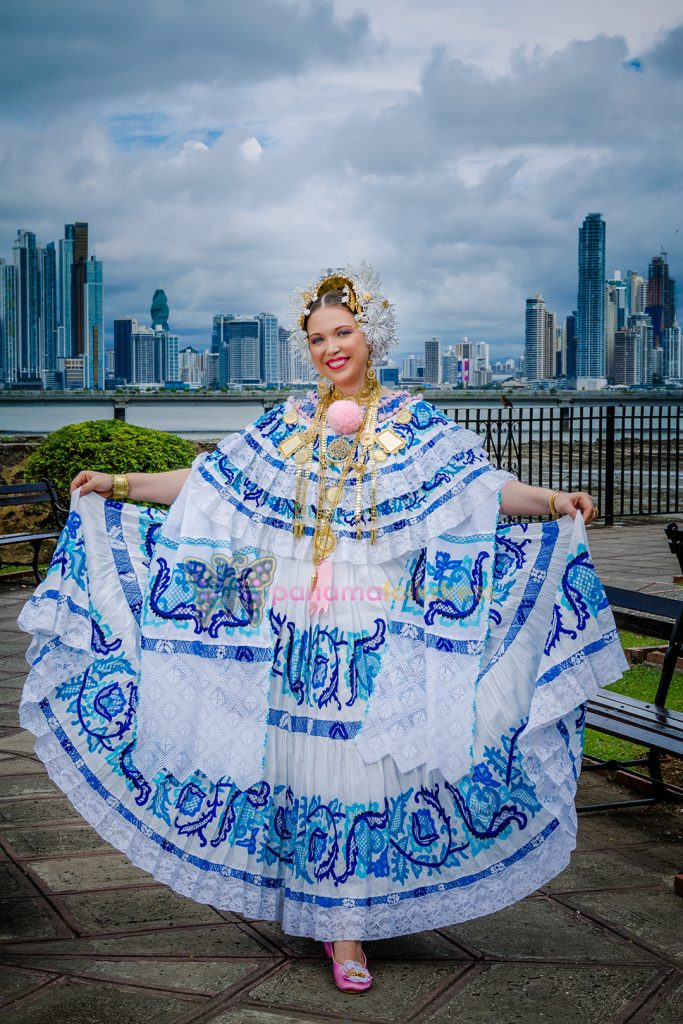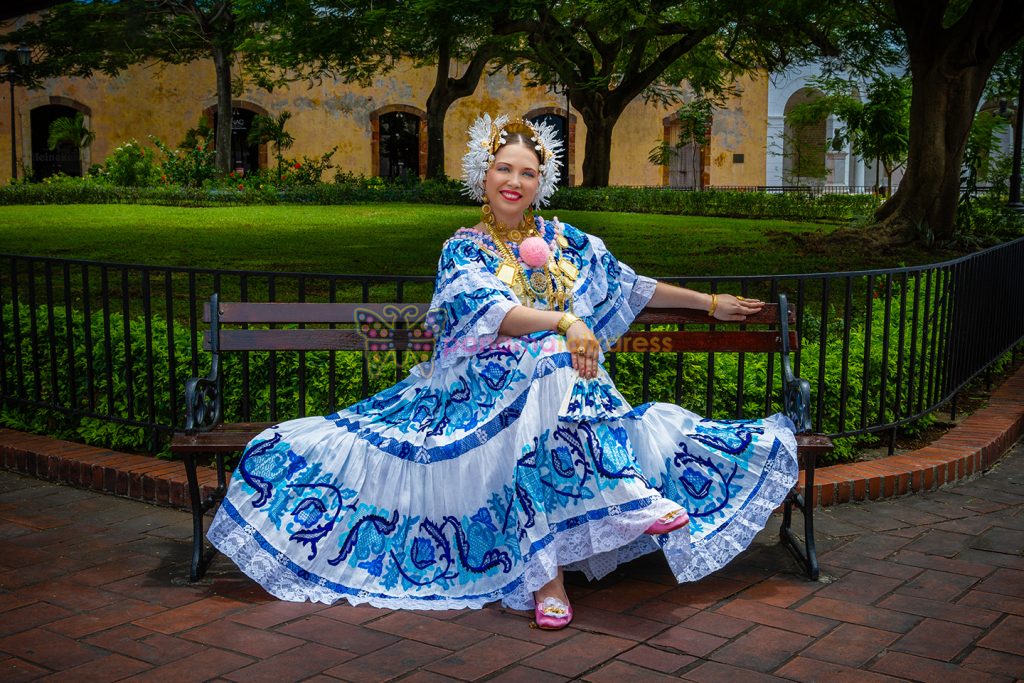
The Pollera is the product of an anonymous art that grew and was developed in the warmth of our countryside homes, in the midst of our pure feminine crafts.
It is the typical dress of the Panamanian woman composed of two separated pieces that consist of a shirt and a Pollerón (long skirt) made with fine fabric.
The Shirt: In the inner part is formed by a basic frame called tapabalazo and the sleeves. In the outer part it has the top opening of the shirt adorned with lace and two surrounding pieces called “arandelas” one in the upper side and the other below it, both are slightly gathered around the shirt and adorned with different handmade labor, lace and embroidery.
The Pollerón(Long Skirt): The Polleron has three segments. Thesesegments are the “pretina” (waist line upper part), the body (middle part) and the “Susto” (Lower Part). The Polleron is decorated over the white fabric with handmade inserts that are sewed directly in to it; others are cut off from other fabric and then finely sewed over the white fabric. These types of labor have different names, the most known are “Talco en Sombra” , “Zurcida” (darn), “Calada” (open work), “Sombreada” (shaded), “Marcada” (cross stitch). The most expensive ones are usually the Polleras that carry “Zurcida” and “Sombreada” techniques because of the level of complexity involved in creating them.
In the Pollera as unique elements, it has strongly caught our attention the hard and delicate handwork, the traditional structure frame and the colored labor imprinted over fine fabrics with perfect symmetry.
It is relevant to mention that is in the Peninsula of Azuero that covers the Provinces of Herrera, Los Santos and part of Veraguas where this typical dress has had the most use, conservation and life.
It is in the Province of Los Santos, especially in the Districts of Guararé and Las Tablas where they have remained the greater number of craftsmen that with their work, they have managed to preserve the popular traditions of the ornamental structures that compose this dress.
What offers evidence of this are the valuable units of antique Polleras that have labors made of thread dyed with snail’s urine, vegetable dyes or extracted from other fabrics and called “hilacheros” (strands) that can be observed in the Manuel Fernando Zarate museum in Guararé and in the personal collection of Folclorist Manuel DeLeón Madariaga. These units were made in Las Tablas between 1876 and 1900 and assure us that the Pollera was already used in its total confection according to the actual pattern in the regions where the national traditions have persisted with great vigor.


